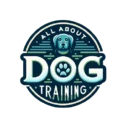Unleashing Potential: A Guide to Advanced Dog Training
Understanding and effectively training a dog is an integral part of making the human-dog relationship fruitful and enjoyable. While basic training concentrates on making a puppy or an adult dog understand basic instructions like sit, stay, or heel, advanced dog training goes many steps beyond such rudimentary lessons.
In advanced dog training, the primary aim is to make the dog responsive to commands in all situations – regardless of distractions. It trains the dog to carry out complex commands and even to make judgment calls in situations where human intervention is not possible. However, this doesn’t mean that a novitiate is incapable of participating in advanced dog training. With a systematic approach, the right resources, and patience, even a novice can successfully navigate the intricate pathways of advanced dog training.
Features of Advanced Dog Training
Proactive Obedience
In advanced dog training, obedience is proactive rather than reactive. While initial training may make your dog react to your commands, advanced training can make a dog anticipate and comply with you even without your express commands. They learn to discern the indicators of your requirements and behave accordingly.
Considering this, advanced dog training is about making your dog understand the ‘why’ behind your commands. This allows them to make an informed judgement, even when they are not under direct supervision

Training in Distraction-Heavy Situations
Training your dog in a quiet park or your backyard is one thing; making it follow your commands on a busy street packed with other animals, vehicles, and loud noises, is quite another. Advanced dog training prepares your dog for real-world situations by training them in various environments, complete with distracting sights, sounds, and smells.
By continuously practicing commands in diverse situations, your dog will learn to respond reliably, reducing the risk of them getting confused or frightened in unfamiliar surroundings.
Advanced Tricks and Tasks
Tricks like playing dead, rolling over, or fetching the paper fall into advanced dog training. Also, advanced training can help your dog learn to perform tasks like cleaning up their toys into a bin or fetching you items on command.
Reliable Recall
Reaching the point where your dog returns to you at your first call, regardless of the distractions or possibilities, is a significant milestone in advanced training. It’s not only convenient but also vital for your dog’s safety

Tools for Advanced Dog Training
Certain tools can make advanced dog training more effective. It must be noted that the tools are meant to aid the training process and not to instill fear or pain in the dog.
Clicker for Positive Reinforcement
A clicker can be invaluable in training your dog. When the click sound is consistently associated with treats or rewards, it can efficiently signal to the dog that the action they’ve just done is correct and desirable.
Long Lead
A long lead, often 10 to 20 feet, gives your dog the feeling of being off-leash while allowing you some control. This is particularly beneficial for recall training and perfect for progressing from indoor training to outdoor distractions.
Training Vest
Training vests for dogs often have sections where you can slot in weights. This helps to tire out high-energy dogs more quickly and increases the dog’s strength and fitness

FAQ
How long does it take to train a dog with advanced commands?
The time it takes can vary depending upon the age, breed, and character of the dog. Consistent practice leads to quicker results.
Do I need to have professional qualifications to carry out advanced dog training?
While certifications help in understanding dog behavior better, it is not mandatory for advanced dog training at home. The key is patience, perseverance, understanding of your pet’s attributes, and consistency.
Can all types of dogs undergo advanced training?
All dogs can be subject to advanced training. However, the training approach may vary based on the breed of dog, their temperament, and individual personality traits.
Conclusion
Advanced dog training may seem daunting at first glance, but it leads to an incredibly gratifying relationship between you and your dog. It requires patience, consistency, and a deep understanding of your dog’s needs and behaviors.
Remember that just like humans, each dog is unique with its learning curve. So while some may catch on quickly, others may require more time and patience. The key is to maintain a positive and patient approach, making use of the different techniques and tools available


